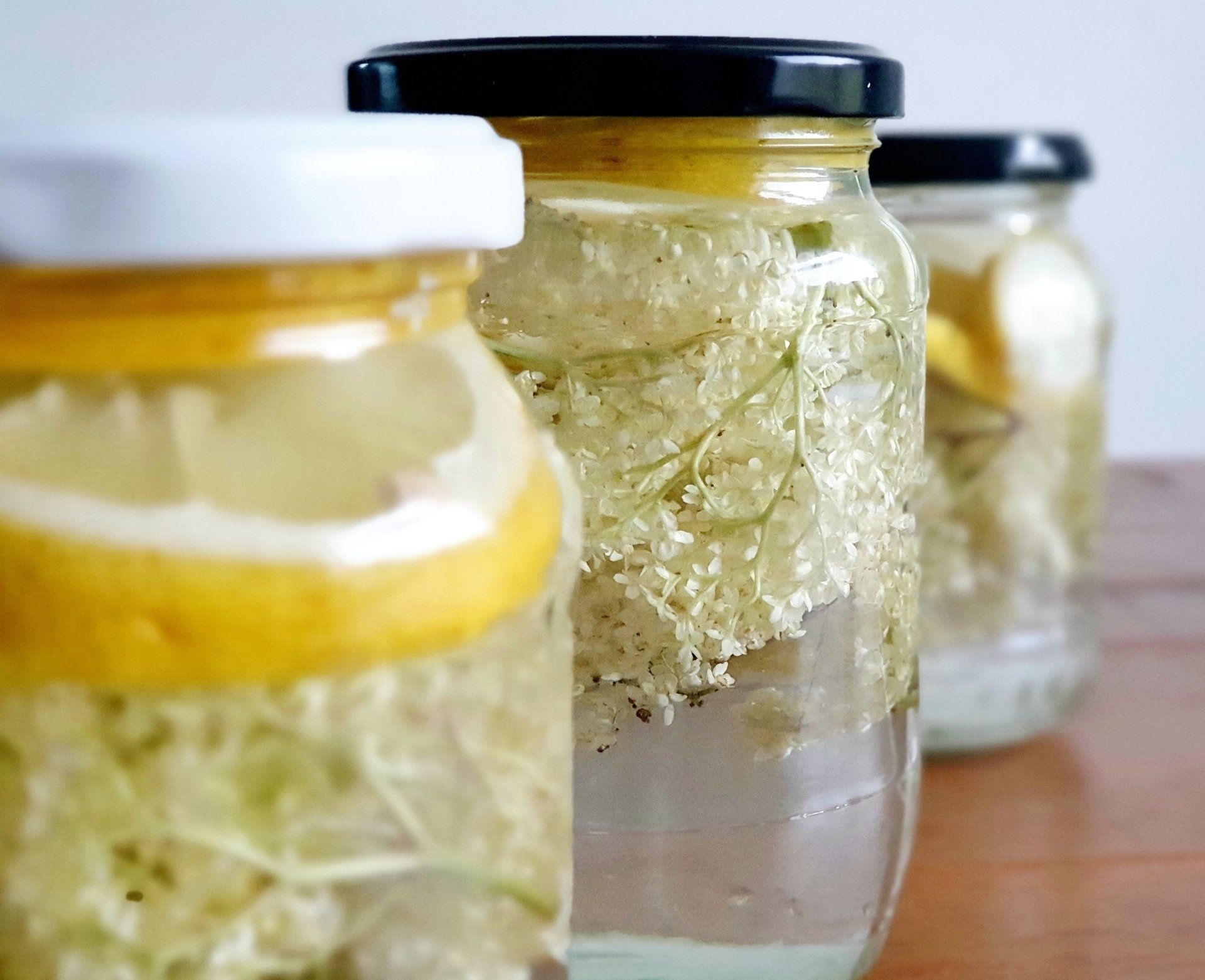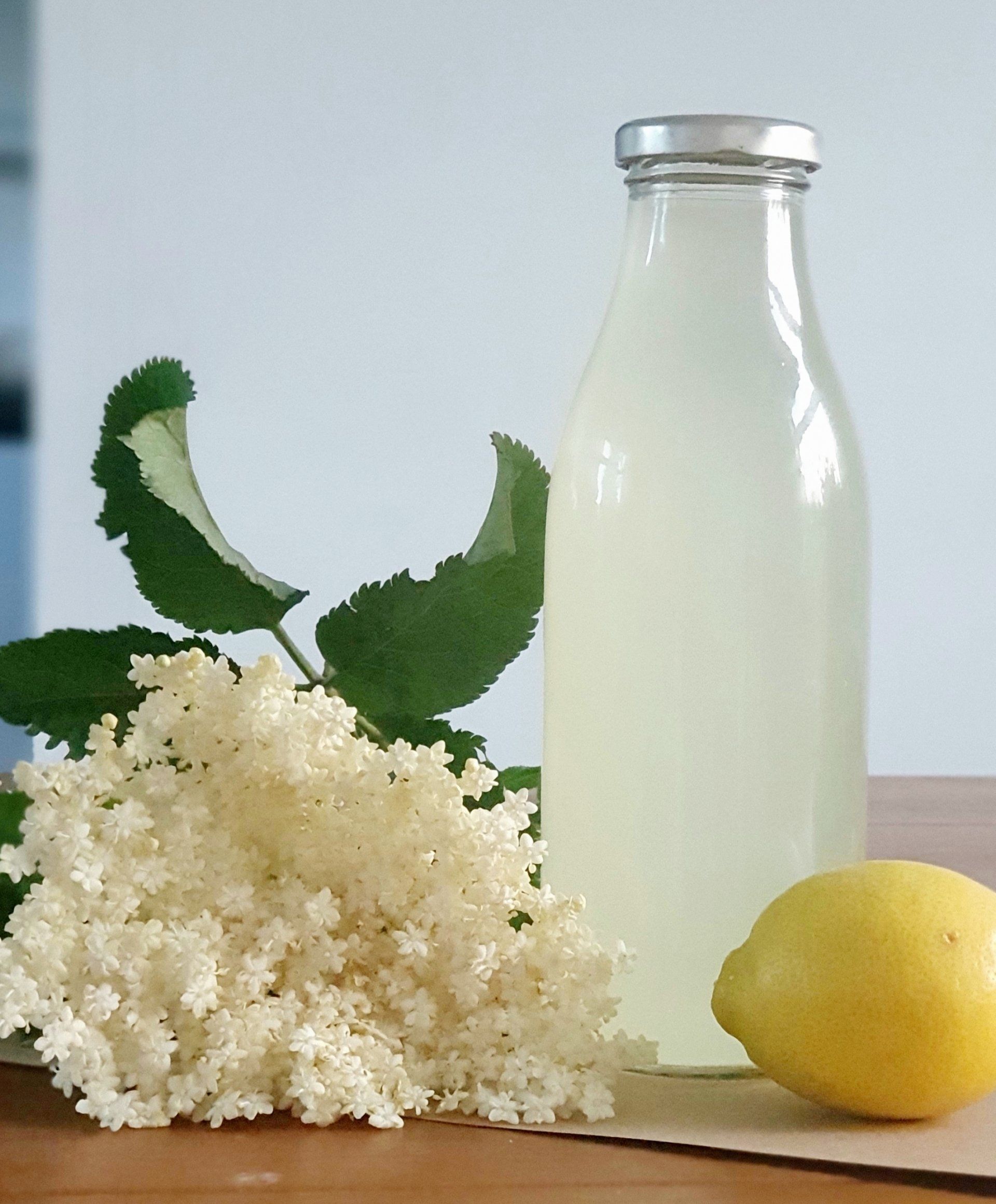It’s elderflower season
I absolutely love elderflower. I’m really lucky as we have 3 large bushes in the garden so I don’t need to go anywhere to gather the flower. Don’t worry if you don’t have any in your garden, as they are really easy to find, they are everywhere.
It’s really fun to go for a walk with a basket and pick them anyway.
Every year I make a lot of cordials, which never last as we all love it, plus I dry some flowers for the winter flu season when we drink it as a tea. Cordials are tasty, but they are often full of sugar so I’m here to introduce you to a healthy alternative drink.
Lacto-fermentation
Have you heard about lacto-fermentation before? Lacto-fermentation is a specific type of fermentation that uses lactic-acid-producing bacteria to preserve foods. The term “lacto” refers to lactic acid, which is a type of acid that’s produced upon the breakdown of sugar in an oxygen-free environment.
During lacto-fermentation, lactic acid bacteria break down carbs into lactic acid and carbon dioxide (hence the fizziness).
Yes, it is alive! Which is so beneficial for your gut as it is highly probiotic.
Let’s make probiotic fizzy elderflower soft drink!
You don’t need any fancy equipment to make your own. You just need:
- a glass jar with lid (approx. 1 litre)
- elderflowers, 3-4 large flower heads
- water, plain tap water boiled then cooled down to room temperature
- lemon (optional). Try to use an organic lemon, as you don’t want chemicals in it that could potentially harm your bacteria
-sugar, 2-3 tbsp.
Don’t worry though, the sugar is the food for your bacteria and it will be eaten, leaving very little in the drink.
How to make it:
- Collect some elderflowers. Preferably choose a sunny and dry day to gather them. Cut off any stem as you just use the flower head. You don’t need to wash them, as you want to keep the beneficial pollens in them.
- Fill your jar approx. 1/3 full of the elderflowers
- Add 2-3 slices of lemon
- Dissolve 2-3 tbsp. sugar in your cooled water
- Fill up your jar with the water, to the very top, and close the lid and let it sit somewhere at room temperature out of direct sunlight.
- Leave it for 2-6 days
- When it starts to visibly bubble, you can strain it and bottle the drink.
- Keep it in the fridge and drink it within a few days.
Tada! You made it. And your gut loves you.
Helpful tips:
-The more sugar you add, the faster the fermentation is.
-The warmer the ambient temperature is, the faster the fermentation is.
-If after straining the mixture you don’t find it fizzy enough, just add a tbsp. of sugar to it and let it ferment for a few more days
-Always open the bottle carefully as the pressure can really build up
-If you decide to ferment for longer, you will need to open the bottles every day to release some pressure. I watched videos of bottles blowing up, so burp that thing.
-If you ferment for longer, there is a chance the mixture may become alcoholic and could become a kind of champagne, so be careful when serving it to children.
-As it is a live bacteria, fermentation never stops but it slows down in the fridge.
-You can use maple syrup or honey instead of sugar, but some types of honey might be antibacterial so you might kill the beneficial friends, and anyway they eat the sugar so I wouldn’t be scared.
-To speed things up, you can add an extra tbsp. of whey or other fermented liquid.
If you haven’t shown your gut some love in a long time and it’s not used to probiotic goodness, you might want to take things slow. I’d recommend max 2-3 oz. a day to start with, as it potentially could give you cramps, or upset your tummy. Don’t worry if you have a healthy gut that is used to probiotic goodness though!
Don’t expect a sweet drink. If fermentation has taken place properly, it will be sharp and tangy.
-Trust your nose and eyes. There’s always the possibility of contamination, due to dirty jar for example. The liquid is meant to have a cloudy white-ish colour, but if it’s mouldy, just chuck it out and try again!
I hope this helps and that you’ll give it a go. Let the fermentation boat take you places. You should see my counter.
Love,
Andrea




